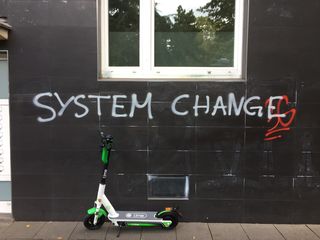Media
Is There Light in the Darkness?
How art can be a remedy for contemporary malaise
Posted December 15, 2019
Last week I finished teaching a delightful class of introductory anthropology students. During the semester, most of them impressed me with their attentiveness. They did the required readings, watched and commented upon assigned videos—mostly TEDx talks—and performed quite well on three exams. At the end of my concluding lecture on how social media shapes contemporary social life, I asked a series of questions about reading.
“How many books have you voluntarily read during the past year?”
The response: stone silence.
“Has anyone read 50 books? You know books that you didn’t have to read.”
No one raised a hand.
“25 books?”
Lots of shoulder shrugging.
“20?”
One young woman raised her hand.
"10?”
A smattering of hands went up.
“5 books, anyone?”
Perhaps 10 students in a class of 50 raised their hands.
“Zero books?”
About one-half of the students had not read a single book in 2019!

A deep sadness overtook me. In a flash, I dreaded what they might find in a world in which people don’t read. We had just discussed some of the ramifications of contemporary social media—a dearth of book and article consumption, reduced attention spans, not to forget the impoverished art of conversation, all of which corresponds to a pervasive experience of boredom, an inescapable sense of powerlessness, not to forget the soft thump of alienation. That quick survey of reading habits underscored my belief that these cultural trends have made us ignorant, a dangerous development for any society.
What will become of my students? Are they likely to bear the burdens of alienation in a world that often seems to lack empathy and a desire for social justice?
Can they adapt to living in universities in which they have to prepare for the real possibility that an active shooter might show up in their French or Physics classroom?
Can they adjust to a world in which social media and the will to succeed at any cost seems to have eviscerated the social contract?
What are the social and psychological costs of living in such a world?
There are no easy answers to these questions, for the swirl of contemporary culture is so overwhelming that it has a numbing effect—little or no reading, the diminution of face-to-face conversation, the expansion of social isolation, and cultural alienation.
What can one do tolerate the conflicting confusions that we face each and every day? Can we make sense of the world? In the 19th Century, the great philosopher Friedrich Nietzsche brilliantly articulated the psychological trauma of alienation, of confronting the inexplicable. He wrote: “When the inquirer, having pushed to the circumference, realizes how logic in that place curls about itself and bites its own tail, he is struck with a new kind of perception, a tragic perception, which requires, to make it tolerable, the remedy of art.” ([1876] 1956:93). In a recent blog about the social and psychological tragedy of 21st-century immigrant children torn from their parents along the US southern border, the writer Philip Graham articulates our deepest fears—of loss, of isolation, of alienation, of powerlessness—the very kinds of psychological realities that are all too familiar to my students.
Graham’s powerful prose echoes the ideas of Nietzsche:
“…art can help frame and illuminate our commitment. In this way, we might redeem our country’s promise, protect the traumatized lives of children from neighboring countries we’ve never met, and safeguard the future lives of the children we do know, in this country of ours that must not become completely unrecognizable.”
In the pervasive darkness of our era, the light of art can miraculously cut through the obscurity. Emerging from paintings, sculptures, poems, films, novels, media installations, and artful blogs, this light, which in Nietzsche’s words makes life “tolerable,” charts a course to the path to well-being.
The path toward well-being begins in our classrooms where students, if they take advantage of the opportunity, can find a mentor who can artfully show them how art can set their moral compass and enable them to find their way to personal illumination. That is a path to a robust, viable, and informed future.
Yes, there is light in the darkness.
References
Graham, Philip (2019). No One Leaves Home Unless. www.philipgraham.net
Nietzsche, Friederich ([1855] 1956) The Birth of Tergedy Out of the Spirit of Music. Francis Groffling, transl. Garden City, New York: Doubleday, Anchor Books.




